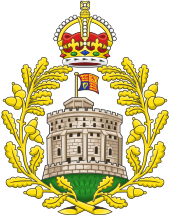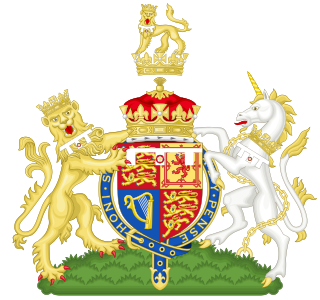
Duke of Edinburgh, named after the city of Edinburgh in Scotland, is a substantive title that has been created four times since 1726 for members of the British royal family. It does not include any territorial landholdings and does not produce any revenue for the title-holder.

The House of Windsor is a British royal house, and currently the reigning house of the United Kingdom and the other Commonwealth realms. The royal house's name was inspired by the historic Windsor Castle estate. Since it was founded in 1917, there have been five British monarchs of the House of Windsor: George V, Edward VIII, George VI, Elizabeth II, and Charles III. The children and male-line descendants of Queen Elizabeth II and Prince Philip also genealogically belong to the House of Oldenburg since Philip was by birth a member of the Glücksburg branch of that house.
Princess Victoria or Viktoria may refer to:

Princess Marie Louise of Schleswig-Holstein was a granddaughter of Queen Victoria.

Princess Helena Victoria of Schleswig-Holstein was a granddaughter of Queen Victoria of the United Kingdom. From 1917 her name was simply Princess Helena Victoria.

The Mountbatten family is a British dynasty that originated as a British branch of the German princely Battenberg family. The name was adopted on 14 July 1917, three days before the British royal family changed its name from "Saxe-Coburg and Gotha" to "Windsor", by members of the Battenberg family residing in the United Kingdom, due to rising anti-German sentiment among the British public during World War I. The name is a direct Anglicisation of the German Battenberg, or Batten mountain, the name of a small town in Hesse. The titles of count and later prince of Battenberg had been granted in the mid-19th century to a morganatic branch of the House of Hesse-Darmstadt, itself a cadet branch of the House of Hesse.
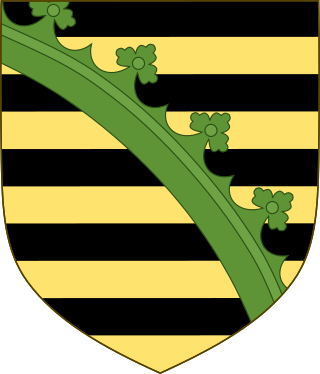
The House of Wettin was a dynasty of German kings, prince-electors, dukes, and counts that once ruled territories in the present-day German states of Saxony, Saxony-Anhalt and Thuringia. The dynasty is one of the oldest in Europe, and its origins can be traced back to the town of Wettin, Saxony-Anhalt. The Wettins gradually rose to power within the Holy Roman Empire. Members of the family became the rulers of several medieval states, starting with the Saxon Eastern March in 1030. Other states they gained were Meissen in 1089, Thuringia in 1263, and Saxony in 1423. These areas cover large parts of Central Germany as a cultural area of Germany.

The Battenberg family is a non-dynastic cadet branch of the House of Hesse-Darmstadt, which ruled the Grand Duchy of Hesse until 1918. The first member was Julia Hauke, whose brother-in-law Grand Duke Louis III of Hesse created her Countess of Battenberg in 1851, with the style of Illustrious Highness (H.Ill.H.), at the time of her morganatic marriage to Grand Duke Louis's brother Prince Alexander of Hesse and by Rhine. The name of the title refers to the town of Battenberg in Hesse. In 1858, the countess' title was elevated to Princess of Battenberg, with the style of Serene Highness (H.S.H.).
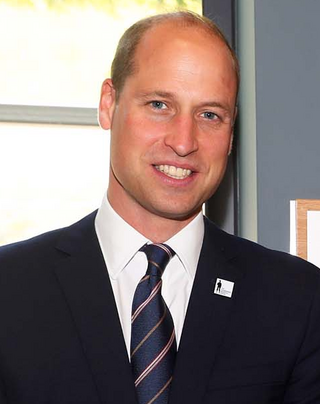
Prince of the United Kingdom of Great Britain and Northern Ireland is a royal title normally granted to sons and grandsons of reigning and past British monarchs, together with consorts of female monarchs. The title is granted by the reigning monarch, who is the fount of all honours, through the issuing of letters patent as an expression of the royal will.

The use of the title of Princess of the United Kingdom of Great Britain and Northern Ireland is entirely at the will of the sovereign, and is now expressed in letters patent. Individuals holding the title of princess are styled "Her Royal Highness" (HRH). The current letters patent were issued in 1917 during the First World War, with one extension in 2012.
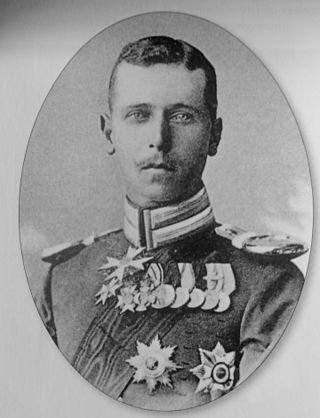
Alfred, Hereditary Prince of Saxe-Coburg and Gotha, KG,, was the son and heir apparent of Alfred, Duke of Saxe-Coburg and Gotha. He died aged 24 under circumstances still not entirely clear. He was a first cousin of Kaiser Wilhelm II of Germany, King George V of the United Kingdom and Tsar Nicholas II of Russia.
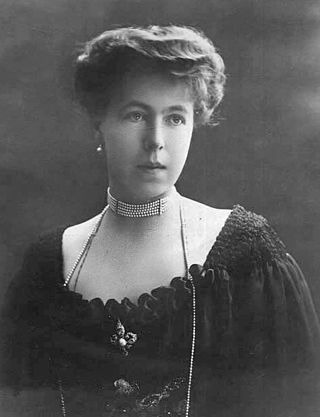
Princess Alexandra of Saxe-Coburg and Gotha was the fourth child and third daughter of Alfred, Duke of Saxe-Coburg and Gotha, and Grand Duchess Maria Alexandrovna of Russia. As the wife of Ernst II, she was Princess consort of Hohenlohe-Langenburg. She was a granddaughter of both Queen Victoria of the United Kingdom and Tsar Alexander II of Russia.
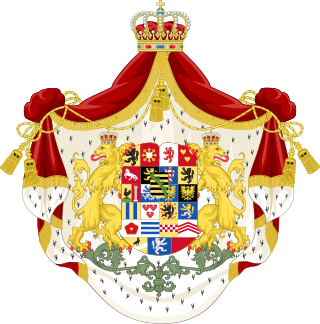
The House of Saxe-Coburg and Gotha is a European royal house. It takes its name from its oldest domain, the Ernestine duchy of Saxe-Coburg and Gotha, and its members later sat on the thrones of Belgium, Bulgaria, Portugal, and the United Kingdom and its dominions.

Lady Pamela Carmen Louise Hicks is a British aristocrat and relative of the British royal family. She is the younger daughter of Louis Mountbatten, 1st Earl Mountbatten of Burma and Edwina Mountbatten, Countess Mountbatten of Burma. Through her father, Lady Pamela is a first cousin of the late Prince Philip, Duke of Edinburgh, and a grandniece of the last Empress of Russia, Alexandra Feodorovna. She served as a bridesmaid and later as a lady-in-waiting to Queen Elizabeth II. She is also a great-great-granddaughter of Queen Victoria through her father.
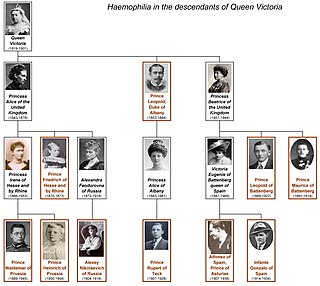
Haemophilia figured prominently in the history of European royalty in the 19th and 20th centuries. Queen Victoria and her husband, Prince Albert, of the United Kingdom, through two of their five daughters – Princess Alice and Princess Beatrice – passed the mutation to various royal houses across the continent, including the royal families of Spain, Germany, and Russia. Victoria's youngest son, Prince Leopold, Duke of Albany, also had the disease, though none of her three elder sons did. Tests on the remains of the Romanov imperial family show that the specific form of haemophilia passed down by Queen Victoria was probably the relatively rare haemophilia B. The presence of haemophilia B within the European royal families was well-known, with the condition once popularly known as "the royal disease".
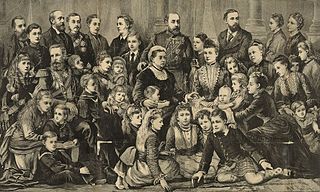
Queen Victoria, the British monarch from 1837 to 1901, and Prince Albert had 9 children, 42 grandchildren, and 87 great-grandchildren. Victoria was called the "grandmother of Europe".

St George's Chapel at Windsor Castle in England is a castle chapel built in the late-medieval Perpendicular Gothic style. It is a Royal Peculiar, and the Chapel of the Order of the Garter. St George's Chapel was founded in the 14th century by King Edward III and extensively enlarged in the late 15th century. It is located in the Lower Ward of the castle.

Duchess of Edinburgh is the principal courtesy title held by the wife of the Duke of Edinburgh. There have been five Duchesses of Edinburgh since the title's creation. Following the accession of Charles III in 2022, the 3rd creation of the Dukedom of Edinburgh merged in the Crown. Following his parents’ wishes, on 10 March 2023, Charles III conferred the title Duke of Edinburgh to his youngest brother, Prince Edward, and his wife, Sophie, became the Duchess of Edinburgh.



